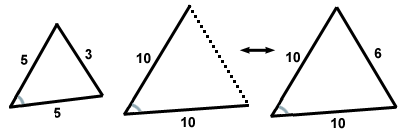Please wait while we process your payment
If you don't see it, please check your spam folder. Sometimes it can end up there.
If you don't see it, please check your spam folder. Sometimes it can end up there.
Please wait while we process your payment

By signing up you agree to our terms and privacy policy.
Don’t have an account? Subscribe now
Create Your Account
Sign up for your FREE 7-day trial
By signing up you agree to our terms and privacy policy.
Already have an account? Log in
Your Email
Choose Your Plan
Individual
Group Discount
Save over 50% with a SparkNotes PLUS Annual Plan!
 payment page
payment page
Purchasing SparkNotes PLUS for a group?
Get Annual Plans at a discount when you buy 2 or more!
Price
$24.99 $18.74 /subscription + tax
Subtotal $37.48 + tax
Save 25% on 2-49 accounts
Save 30% on 50-99 accounts
Want 100 or more? Contact us for a customized plan.
 payment page
payment page
Your Plan
Payment Details
Payment Summary
SparkNotes Plus
You'll be billed after your free trial ends.
7-Day Free Trial
Not Applicable
Renews May 3, 2025 April 26, 2025
Discounts (applied to next billing)
DUE NOW
US $0.00
SNPLUSROCKS20 | 20% Discount
This is not a valid promo code.
Discount Code (one code per order)
SparkNotes PLUS Annual Plan - Group Discount
Qty: 00
SparkNotes Plus subscription is $4.99/month or $24.99/year as selected above. The free trial period is the first 7 days of your subscription. TO CANCEL YOUR SUBSCRIPTION AND AVOID BEING CHARGED, YOU MUST CANCEL BEFORE THE END OF THE FREE TRIAL PERIOD. You may cancel your subscription on your Subscription and Billing page or contact Customer Support at custserv@bn.com. Your subscription will continue automatically once the free trial period is over. Free trial is available to new customers only.
Choose Your Plan
This site is protected by reCAPTCHA and the Google Privacy Policy and Terms of Service apply.
For the next 7 days, you'll have access to awesome PLUS stuff like AP English test prep, No Fear Shakespeare translations and audio, a note-taking tool, personalized dashboard, & much more!
You’ve successfully purchased a group discount. Your group members can use the joining link below to redeem their group membership. You'll also receive an email with the link.
Members will be prompted to log in or create an account to redeem their group membership.
Thanks for creating a SparkNotes account! Continue to start your free trial.
We're sorry, we could not create your account. SparkNotes PLUS is not available in your country. See what countries we’re in.
There was an error creating your account. Please check your payment details and try again.
Please wait while we process your payment

Your PLUS subscription has expired
Please wait while we process your payment
Please wait while we process your payment

Proving Similarity of Triangles
There are three easy ways to prove similarity. These techniques are much like those employed to prove congruence--they are methods to show that all corresponding angles are congruent and all corresponding sides are proportional without actually needing to know the measure of all six parts of each triangle.
If two pairs of corresponding angles in a pair of triangles are congruent, then
the triangles are similar. We know this because if two angle pairs are the
same, then the third pair must also be equal. When the three angle pairs are
all equal, the three pairs of sides must also be in proportion. Picture three
angles of a triangle floating around. If they are the vertices of a triangle,
they don't determine the size of the triangle by themselves, because they can
move farther away or closer to each other. But when they move, the triangle
they create always retains its shape. Thus, they always form similar triangles.
The diagram below makes this much more clear.

Another way to prove triangles are similar is by SSS, side-side-side. If the measures of corresponding sides are known, then their proportionality can be calculated. If all three pairs are in proportion, then the triangles are similar.

If two pairs of corresponding sides are in proportion, and the included angle of each pair is equal, then the two triangles they form are similar. Any time two sides of a triangle and their included angle are fixed, then all three vertices of that triangle are fixed. With all three vertices fixed and two of the pairs of sides proportional, the third pair of sides must also be proportional.

These are the main techniques for proving congruence and similarity. With these tools, we can now do two things.
Please wait while we process your payment

